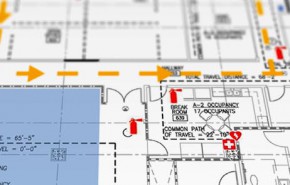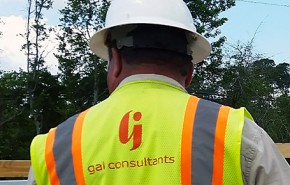In reaction to the events of September 11, 2001, the Federal Emergency Management Agency (FEMA) designated September as National Preparedness Month in 2004 to encourage all Americans to prepare for emergencies in their homes, businesses, schools, and communities. At GAI, we’re taking this opportunity to highlight emergency response at home.
Our previous blog post focused on workplace emergency response, but emergency preparedness is not exclusively limited to the workplace—it should also extend to your employees while they are off the job as well. After all, if they can’t get to work because of an emergency or are worried about the safety of their family members at home, it affects your organization’s ability to perform. So in addition to developing your workplace Emergency Action Plan (EAP), make it a priority to help your employees develop a plan for their families.
One of the best resources for community preparedness is the Federal Emergency Management Agency. Their website is dedicated to public preparedness actions and provides detailed information and checklists that aid in preparing for all types of emergencies.
One of the best resources for community preparedness is the Federal Emergency Management Agency. Their website is dedicated to public preparedness actions and provides detailed information and checklists that aid in preparing for all types of emergencies. It’s a great idea to provide the website link to your employees and suggest they visit. But we also encourage you to communicate these five key tips for getting prepared:
- Think about the types of emergencies that may affect your family. Consider circumstances that require home evacuation, as well as the need to shelter in place. Don’t forget to include the care of pets in your plans.
- Your family may not be together when a disaster strikes, so it’s important to plan how you’ll get to a safe place, how you’ll contact one another, how you’ll get back together, and what you’ll do in different situations.
- Inquire about emergency plans at places where your family spends time, such as daycare, school, faith organizations, and sporting events.
- Local officials and relief workers will be on the scene after a disaster, but they cannot reach everyone immediately. You might receive help in hours, or it might take days. So prepare to have at least 72 hours’ worth of food, water, and other supplies. Find out what you need for your kit and assemble it now.
- All communities provide emergency alerts via phone. These alerts look like text messages but also include a unique sound and vibration. (You’ve probably received an AMBER alert this way in the past.) You can learn more about these alerts and how to sign up at the FEMA website. Many communities also have Facebook pages and Twitter accounts where you can get information during emergencies.
As with your workplace EAP, encourage your employees to review and practice their family/home plan. FEMA recommends practicing it at least twice a year and updating it according to any issues that arise.
![]() As Health & Safety Director, Bill Gourdie is responsible for spearheading initiatives that help GAI comply with all applicable health, safety, and environmental regulations; client requirements; and corporate policies and procedures in order to maintain the safest possible working conditions for all employees. He supports and advances GAI’s commitment to safety by coordinating the development, implementation, and continuous improvement of the company’s Safety & Health Program to enhance its effectiveness and improve performance results. Bill may be reached by phone at 412.399.5219.
As Health & Safety Director, Bill Gourdie is responsible for spearheading initiatives that help GAI comply with all applicable health, safety, and environmental regulations; client requirements; and corporate policies and procedures in order to maintain the safest possible working conditions for all employees. He supports and advances GAI’s commitment to safety by coordinating the development, implementation, and continuous improvement of the company’s Safety & Health Program to enhance its effectiveness and improve performance results. Bill may be reached by phone at 412.399.5219.


